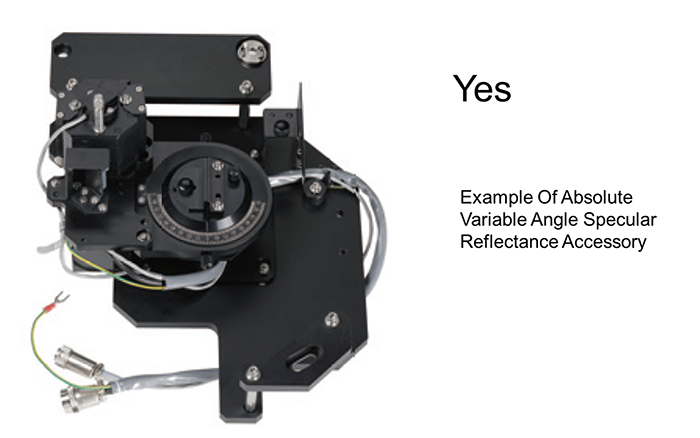How do you measure relative specular reflectance?

Relative specular reflectance measurements involve shining light on the sample, and measuring the specular light reflected at the same angle as the incident light. Relative specular reflectance measurements are especially useful for measuring thin films on a mirror or metal surface. The picture at bottom right shows a specular reflectance measurement attachment used to measure relative specular reflectance. The incident angle of this attachment is 5 degrees (the angle represented by θ. Most specular accessories have an angle of incidence of near-normal (from 0 to 15 degrees). An aluminum-coated mirror is typically used as the reference plate for measurements using the specular reflectance measurement attachment. Samples are placed with the measurement surface facing downward. As seen in the top diagram, the baseline correction is performed with the reference mirror in place and then the sample is measured.
The reason why this measurement is “relative” is because all spectrophotometers calibrate the instrument to 100 %T (%R). Mirrors do not reflect with perfect efficiency at 100%. Aluminum coated mirror %R values can range anywhere from 90 %R to 75 %R depending on the wavelength. The baseline correction “calibrates” the less than 100 %R values of the reference mirror to 100 %R on the instrument. So, the values measured by any relative specular accessory are “relative” to the mirror used in the baseline correction.
A relative specular accessory can make an absolute measurement if a “calibrated” reference mirror is employed for the baseline correction. The known values of the calibrated mirror can then be used to mathematically “normalize” the relative values measured by the accessory.
A specular reflectance accessory cannot be used to measure a diffuse sample, the result will be %R values near zero. This is because the specular reflection that this type of accessory collects is only a very small percentage of the total diffusely reflected light.


